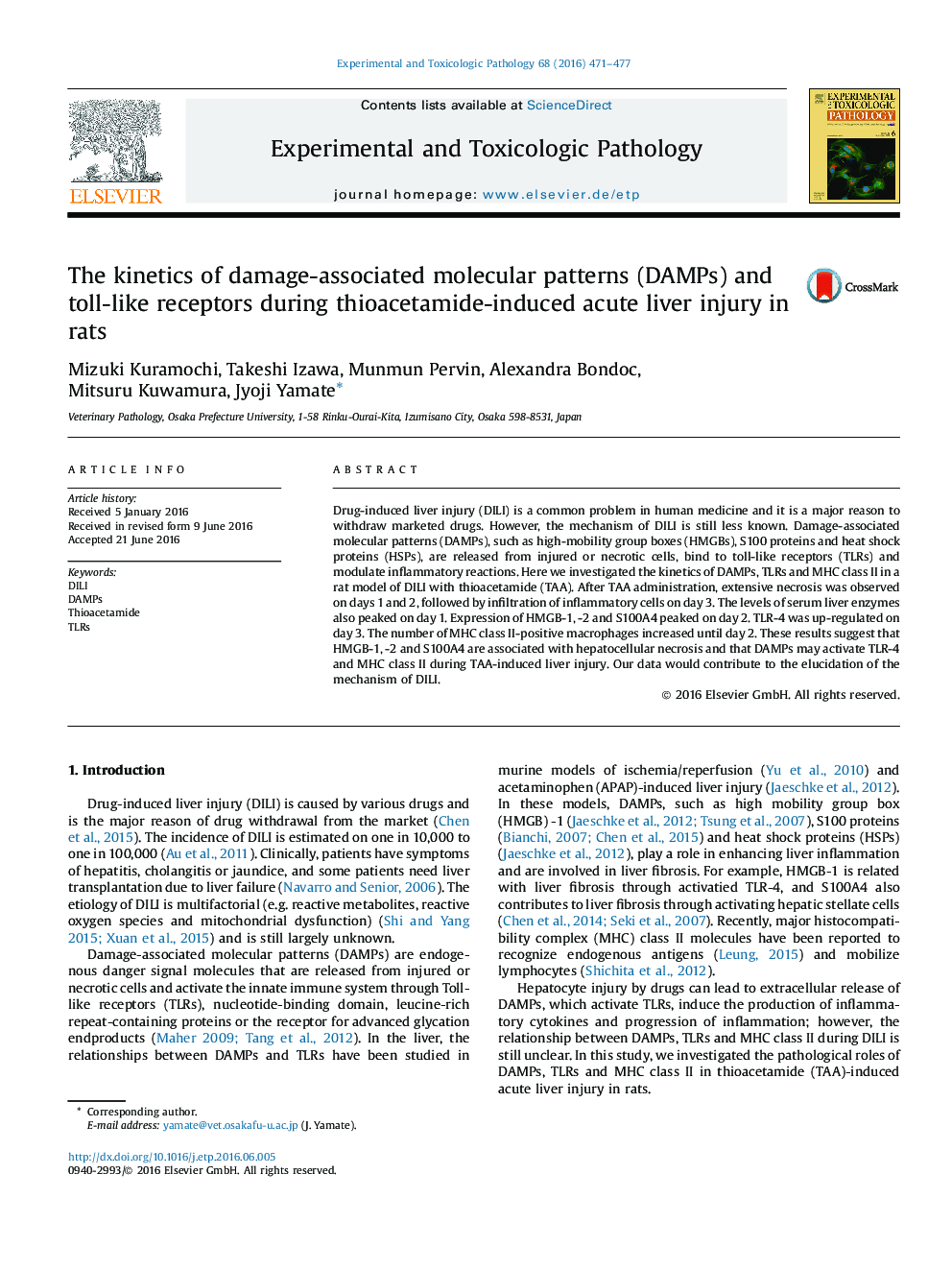| Article ID | Journal | Published Year | Pages | File Type |
|---|---|---|---|---|
| 5549869 | Experimental and Toxicologic Pathology | 2016 | 7 Pages |
Drug-induced liver injury (DILI) is a common problem in human medicine and it is a major reason to withdraw marketed drugs. However, the mechanism of DILI is still less known. Damage-associated molecular patterns (DAMPs), such as high-mobility group boxes (HMGBs), S100 proteins and heat shock proteins (HSPs), are released from injured or necrotic cells, bind to toll-like receptors (TLRs) and modulate inflammatory reactions. Here we investigated the kinetics of DAMPs, TLRs and MHC class II in a rat model of DILI with thioacetamide (TAA). After TAA administration, extensive necrosis was observed on days 1 and 2, followed by infiltration of inflammatory cells on day 3. The levels of serum liver enzymes also peaked on day 1. Expression of HMGB-1, -2 and S100A4 peaked on day 2. TLR-4 was up-regulated on day 3. The number of MHC class II-positive macrophages increased until day 2. These results suggest that HMGB-1, -2 and S100A4 are associated with hepatocellular necrosis and that DAMPs may activate TLR-4 and MHC class II during TAA-induced liver injury. Our data would contribute to the elucidation of the mechanism of DILI.
